Explainer: Who Is An Immigrant?

As international migration has moved to center stage in political, policy, and public discussions in countries around the world, it is important to have a sense of who exactly these conversations are about. Simply put, an immigrant is a person living in a country other than that of his or her birth. No matter if that person has taken the citizenship of the destination country, served in its military, married a native, or has another status—he or she will forever be an international migrant.
About 3.4 percent of the global population—258 million of the world’s 7.7 billion people—are international migrants, a share that has increased slightly over the past couple decades (see figure). Almost three-quarters of immigrants are from less-developed countries, and slightly more migrants move between poor countries than from a low-income country to a wealthy one.
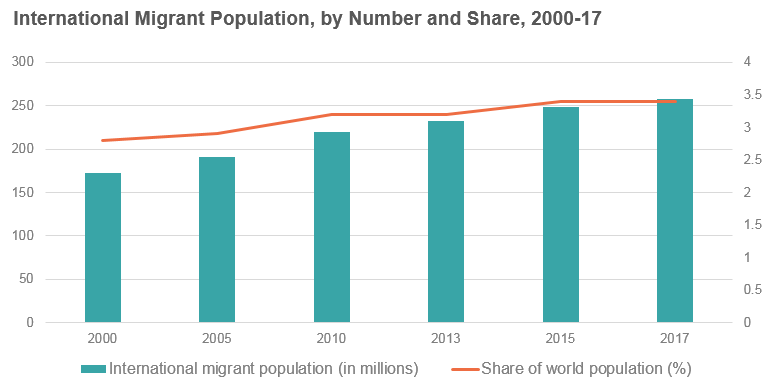
Source: United Nations Population Division, "International Migrant Stock: The 2017 Revision—Number of International Migrants," accessed September 19, 2018, available online.
Just under half of international migrants are women, a proportion that’s stayed largely steady over the past couple decades. When broken down by region, however, the share of female immigrants has been increasing everywhere except Asia.
“Immigrant” is not a term used universally: though common in North America to refer to those living in a country other than their birth country, other terms frequently used include "international migrant," the "foreign born," and "migrant." National statistical agencies base their counts of migrant populations on the number of people who say they were born in another country and/or who hold the citizenship of another country.
In casual usage, “immigrant” can refer to any foreign-born person, but in the United States, some are technically considered “nonimmigrants.” While immigrants intend to stay in a new country permanently, nonimmigrants remain only temporarily, whether that’s for a few days on a business trip, a few months as a seasonal worker, or a few years as a student. Those considered immigrants also include a range of people with different legal statuses. These statuses are not identical, but are often comparable, across different receiving countries.
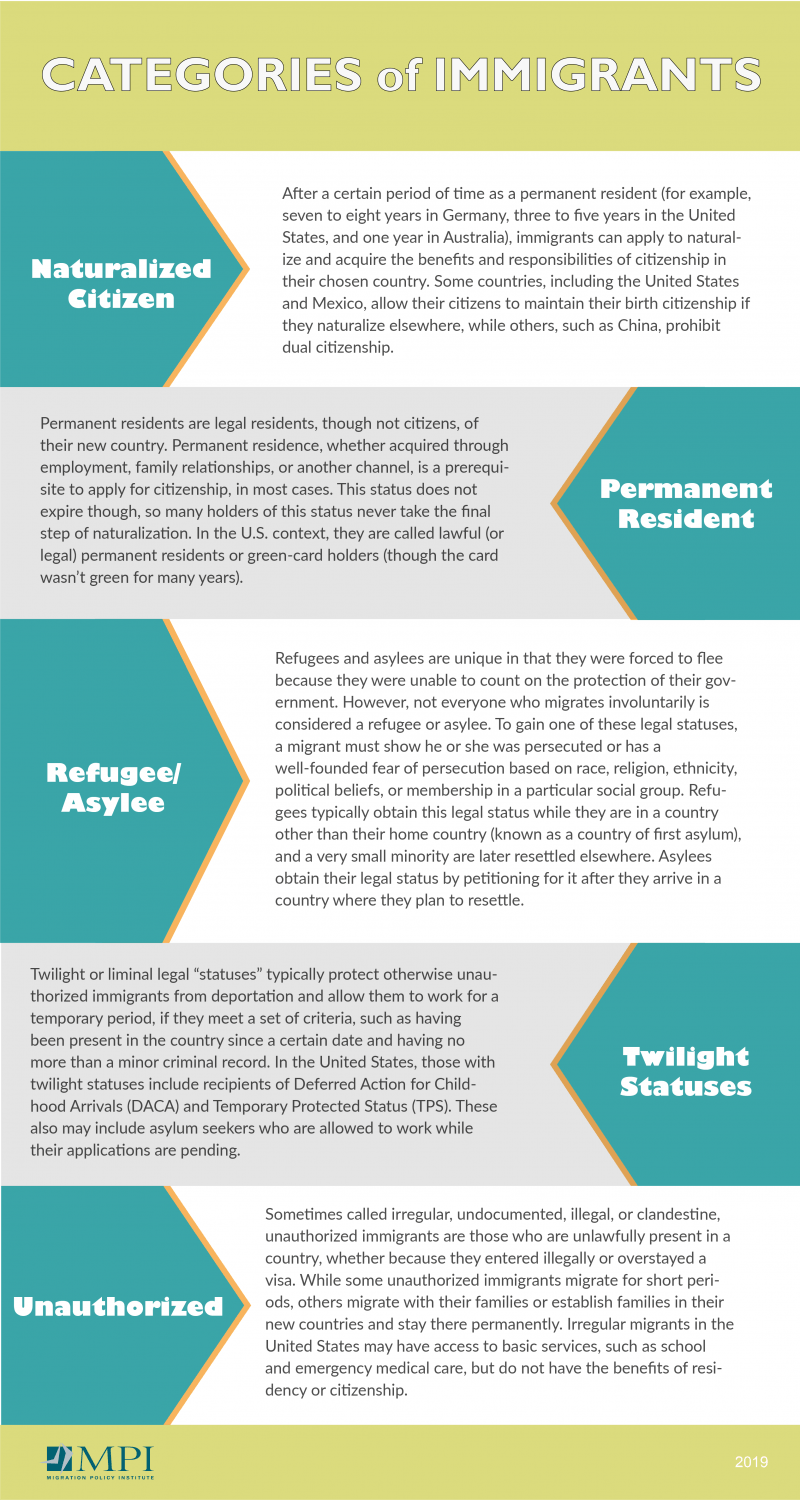
To be an immigrant can thus comprise a variety of experiences, some more legally privileged than others. Generally, though, immigrants may be described as the “first generation” in their new country. Native-born children with at least one migrant parent make up the second generation. A later-added term seeks to address the space in between the first and second generations: the 1.5 generation. Members of the 1.5 generation migrated, likely with their parents, as children or teens.

While it is difficult to estimate the size of the migrant-background population of every country (in other words, the first and subsequent generations that identify as being of a particular origin; also known as the "diaspora") since national governments can have different definitions and collect data differently, it is possible to compare the international migrant population, as reported by the United Nations. The United States has, by far, the biggest migrant population in the world—about four times that of Saudi Arabia and Germany, the two countries with the next largest numbers of immigrants (see figure). Overall, more than 60 percent of international migrants live in Europe or Asia.
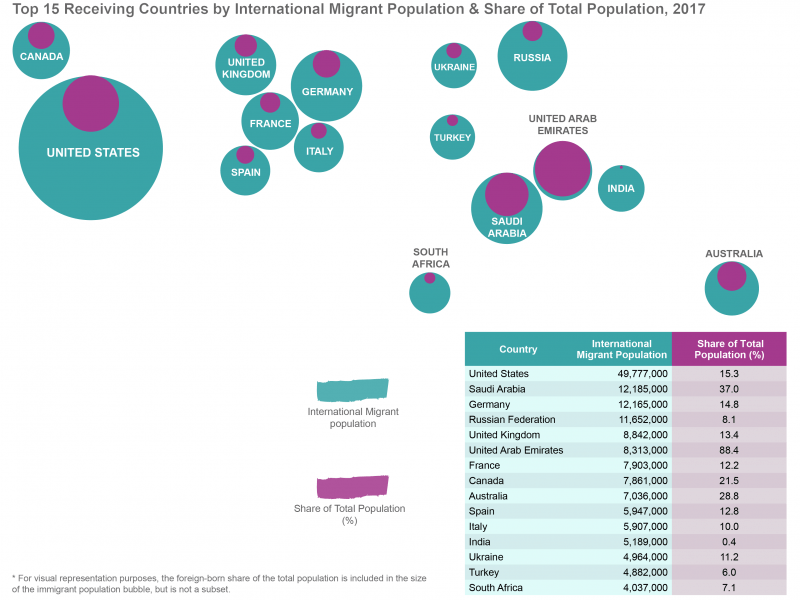
Notes: The size and share of the migrant population in United Nations data may differ from what national statistical agencies report due to different definitions. (For example, the U.S. Census Bureau recorded the foreign-born share of the total U.S. population at nearly 14 percent in 2017 because the agency excludes people with U.S. citizenship at birth. The United Nations, which uses country of birth, counts Puerto Ricans as foreign born, while the Census Bureau excludes them because Puerto Ricans have U.S. citizenship at birth.)
Source: Migration Policy Institute (MPI) Data Hub, "Top 25 Destinations of International Migrants," accessed September 18, 2018, available online.
The United States is far from having the largest share of migrants in its overall population, though. The United Arab Emirates is in the lead, with migrants making up 88 percent of all residents in 2017. Kuwait and Qatar are next in line, with 75 percent and 65 percent. By contrast, the United Nations estimates the foreign-born share of the U.S. population at nearly 15 percent.
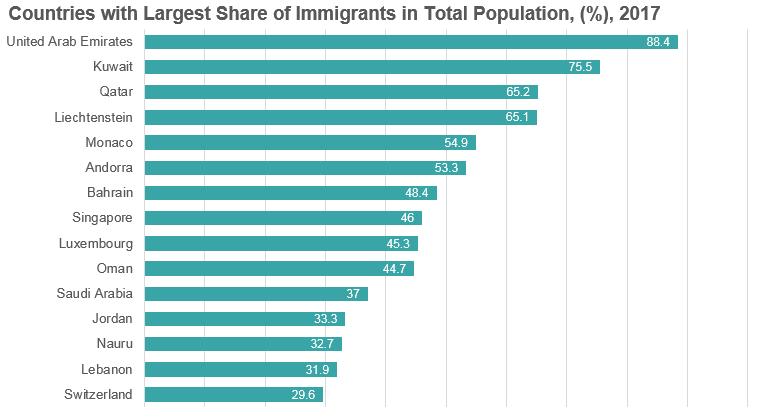
Note: This list comprises only countries, not overseas departments, territories, special administrative regions, or ecclesiastical jurisdictions such as the Holy See, which in some cases have larger foreign-born shares than are listed for countries.
Source: United Nations Population Division, "International Migrant Stock: The 2017 Revision, by Destination and Origin," Table 3, accessed September 19, 2018.
What are the top origins for international migrants? Asia is the source for the largest numbers of people living outside their region of birth (42 million), followed by Latin America and the Caribbean (32 million). The 20 largest countries of origin account for 49 percent of all international migrants, led by India, Mexico, the Russian Federation, and China (see figure). For some of these countries, though (for example the Russian Federation and Ukraine), changing borders, not actual movements of people, resulted in the creation of significant migrant populations.
While India has the largest number of emigrants, these migrants represent just a tiny share of the country's overall population. The number two country, Mexico, by contrast has nearly 1 in 10 of its nationals living abroad. Among top migrant-origin countries, Syria has the largest share of nationals residing outside its borders—the result of a brutal civil war that began in 2011, leading to one of the world's largest and fastest exoduses in recent history.
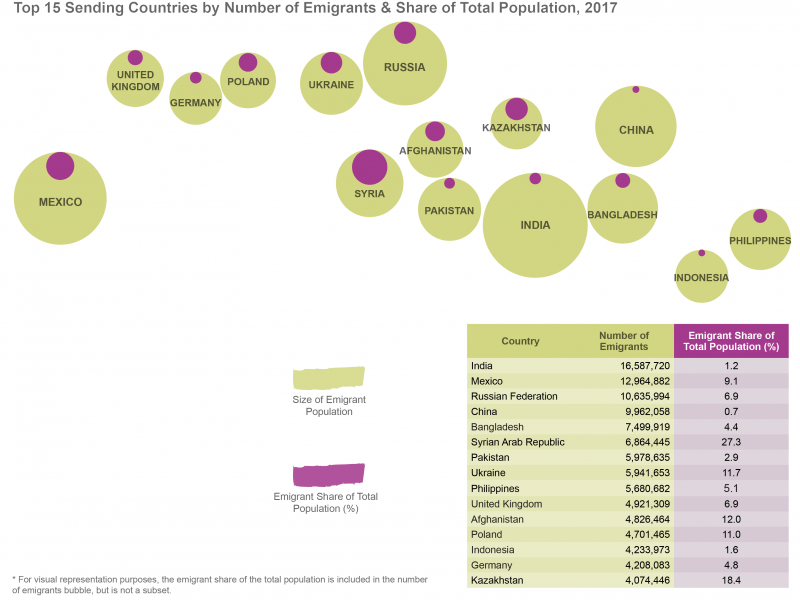
Source: United Nations Population Division, "International Migrant Stock: The 2017 Revision, by Destination and Origin," Table 1, accessed February 11, 2019.

